
Article contents

You can have as many SIPPs as you like, and you can have them alongside other types of pensions. Just bear in mind that there’s an annual allowance of £60,000 or 100% of your salary, whichever is lower. Although having too many pensions can make them easy to lose.
Starting a pension is a great way to tide yourself over during retirement. And a SIPP (self-invested personal pension) is just one kind you might want to consider. But can you have more than one?
Well, you can technically have as many self-invested personal pensions (and all personal pensions) as you want. But we’d probably steer clear of having too many, as they could become easy to lose.
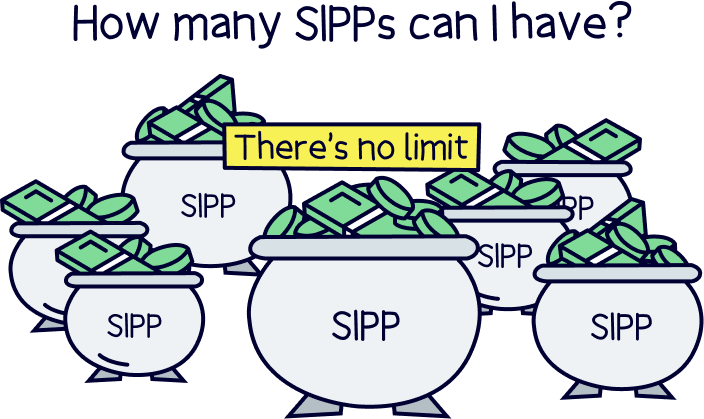
We know what you’re thinking: how could you lose a pension?! Well, it’s easier than you think – in fact, The Association of British Insurers found that there are around 3.3 million lost pension pots in the UK, worth around £31.1 billion altogether! Here, we’ll explore how many SIPPs you can have. But first…
SIPP stands for self-invested personal pension. It’s a type of personal pension, meaning one you set up yourself.
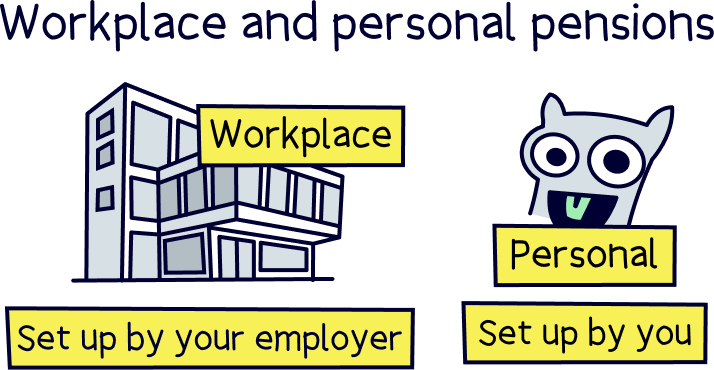
All personal pensions work a bit like piggy banks. You pay money into them throughout your working life. Then, once you reach 55 (57 in 2028) you can start withdrawing your money.
Having said that, they are actually way better than piggy banks. You’ll automatically get a 25% government bonus on everything you save into your SIPP, which is to refund tax you’ve paid on your income (at 20% tax rate), called tax relief. And if you earn over £50,270, meaning you pay 40% or 45% tax on some of your income, you’ll also get this tax back too (which you do by claiming on a Self Assessment tax return).
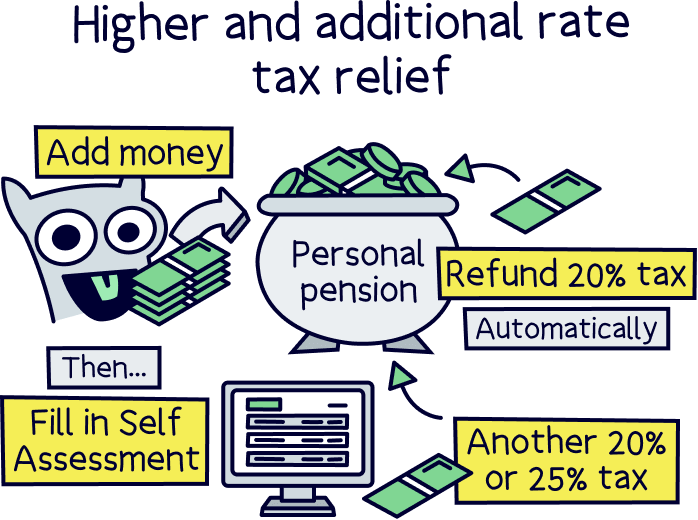
And secondly, if done sensibly, your savings will grow over time in your pension pot, giving you more money to live off when you retire than what you actually paid in.
This is because when you have a pension, your savings will be invested, which is where they’re used to buy things like stocks and shares (where you own a small part of a company, a share of a company). The idea is that when the company grows and increases in value, the savings in your pension pot do too!
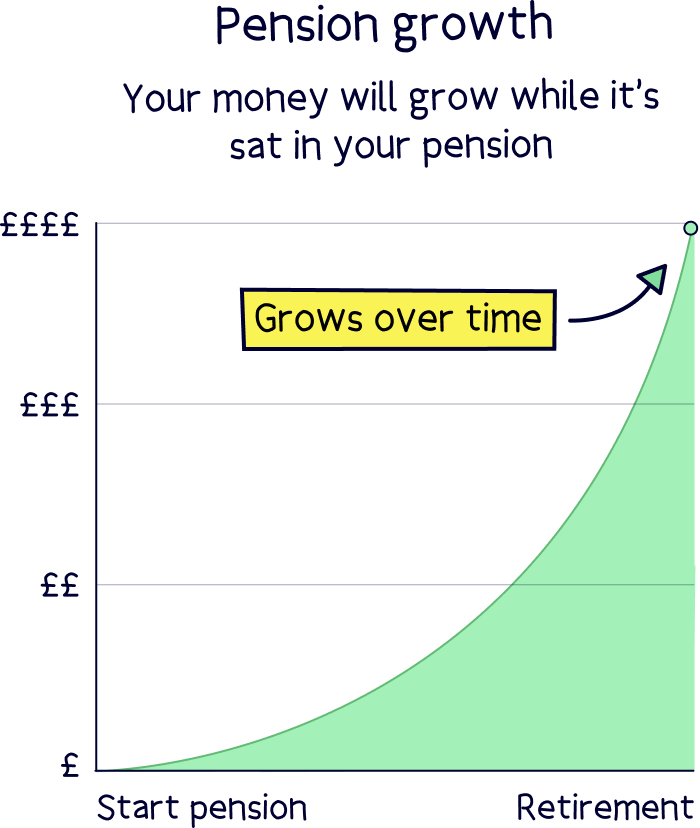
Find out how much your pension could grow over time with our pension calculator.
With most kinds of pensions, your money will grow without you having to lift a finger – your pension provider (the company looking after your pension) will have experts whose job it is to invest your money for you. However, with a SIPP, you’ll need to spend time investing your savings yourself. That’s right, you choose your own investments and are responsible for managing your investment strategy – it can be exciting but also potentially a bit scary!
If you want a new pension check out the best SIPP providers.
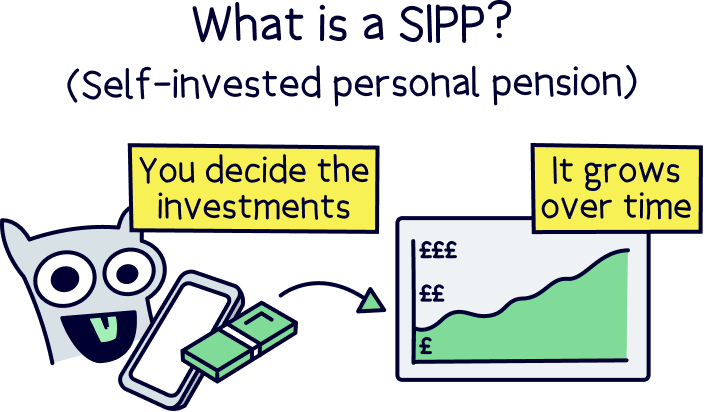
There are some SIPPs that offer a bit more of a middle ground and are still managed by experts. With these, you still make the investment decision, but you decide from just a small range of options that your pension provider picks out for you – so it’s less complicated. If that sounds good to you, check out the best private pension providers.
Our top picks for expert-managed SIPPs are PensionBee¹ and Beach¹, both are easy to use, have pretty low fees and great customer service. Beach¹ also allows you to save within a pension and an ISA for general savings at the same time.
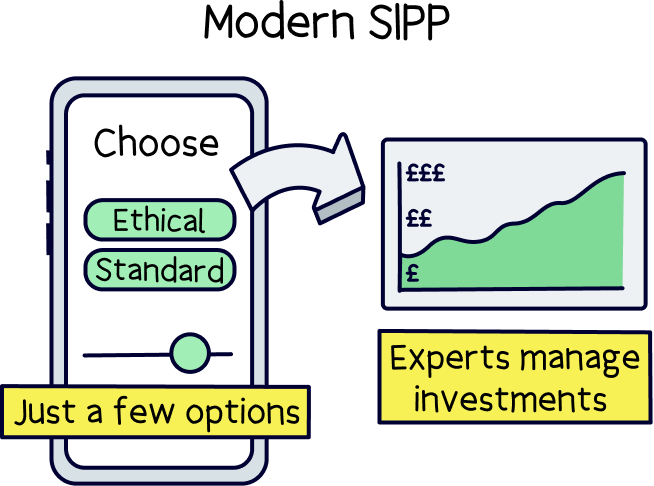
Having said that, traditionally, the idea of a SIPP is that you buy and sell investments yourself. So, in general, if you don’t know anything about investing and you’d like the help of an expert, a SIPP probably isn’t for you (but don’t worry, other kinds of personal pensions will be).
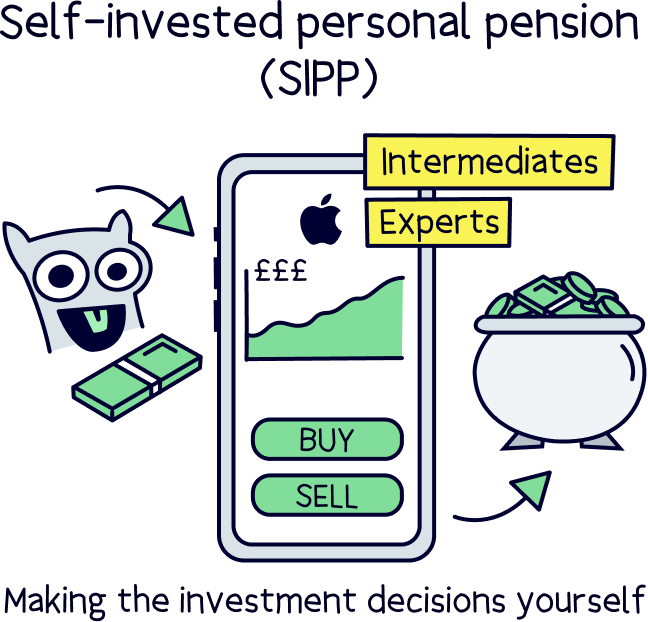
On the other hand, if you’re a bit of a pro when it comes to investing and you want more control over where your money goes, a SIPP could be right up your street!
Find the best pension for you – you could be £1,000s better off.
Yes! In fact, you can have as many SIPPs as you want. There’s no limit!
Some people like the idea of having more than one SIPP as it means they get access to an even wider range of investments. After all, not every investment will be available from one pension provider.
However, more isn’t always better. SIPPs tend to have a massive range of investment options anyway, especially when compared with standard personal pensions. And having multiple SIPPs could just make them easier to lose – you know how we said that there are millions of lost pension pots in the UK? You don’t want one of those to be yours!
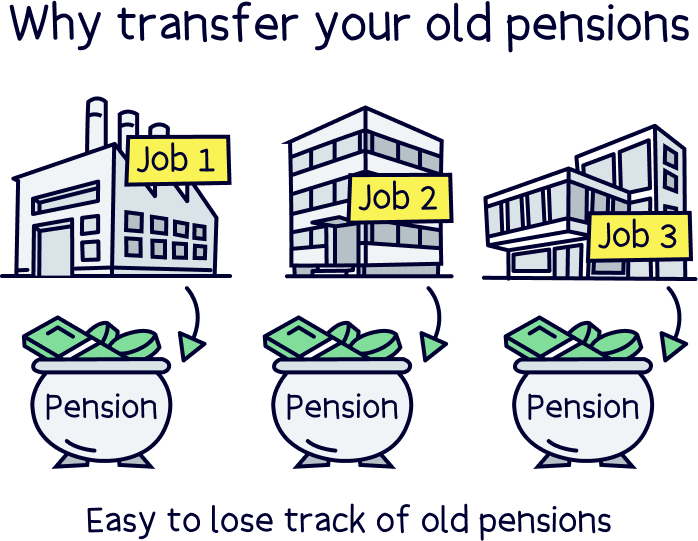
Ultimately though, how many SIPPs you have is totally up to you. Just be aware that even though there aren’t any limits as to the number of SIPPs you can have, there are some limits in terms of how much you can pay into pensions (including SIPPs) each year and over your lifetime. Here’s the lowdown.
Remember how we said that you won’t have to pay any tax on the earnings (like your salary) that you pay into your pension? Well, that’s the government’s way of helping you to boost your savings for retirement (after all, they don’t want to be left propping you up in your old age!). But they don’t want to help you too much either.
Note: You can estimate your yearly retirement income based on your pension pot with our retirement income calculator.
To limit the amount of tax relief you can get, they have something called the annual allowance. The annual allowance refers to how much you can pay into your pensions each year while still getting that lovely thing called tax relief in full. Here's our pension tax relief calculator.
The pension annual allowance is £60,000 or 100% of your salary – whichever is lower.
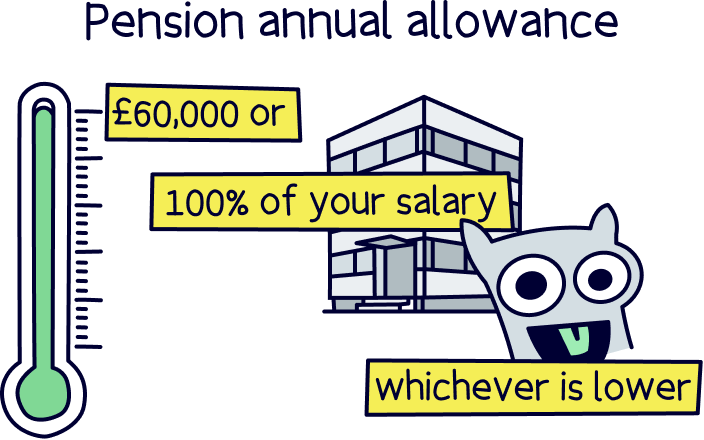
That means if you earn £30,000 per year, your annual allowance will be £30,000 per year. It’s the same as what you earn, because you’re earning under £60,000.
On the other hand, if you earn £100,000 per year, your annual allowance will be £60,000 per year. This is because you’re earning more than £60,000.
There’s just one exception. If you’re over the age of 55 and you’re already taking an income from your pension, your annual allowance will be much lower – normally £10,000.
Now, technically, you can pay as much into your pensions as you want – there’s nobody stopping you! But if you stay under your allowance, you’ll get tax relief on every penny you pay into your pension pot. Nice!
Note: The most you can take out of your pension tax-free is £268,275.
If you go over the allowance, however, you won’t be able to claim that sweet, sweet tax relief on the extra – which might mean you’re better off doing something else with that money instead (for instance, you could stash it away in a different kind of savings account, like a Stocks & Shares ISA or Lifetime ISA. By the way, here’s our article on a pension vs Lifetime ISA.
Yes! Just as you can have as many SIPPs as you want, there are no limits on how many pensions you can have overall. Which is lucky, because if you’re an employee, the chances are you have a workplace pension already.
A workplace pension is a pension that’s set up for you by your employer – normally, they’ll legally have to provide you with one, and they’ll also legally have to contribute to it alongside you. You’ll contribute at least 5% of your earnings each month, while they’ll contribute at least 3% from their own pocket. Kerching!
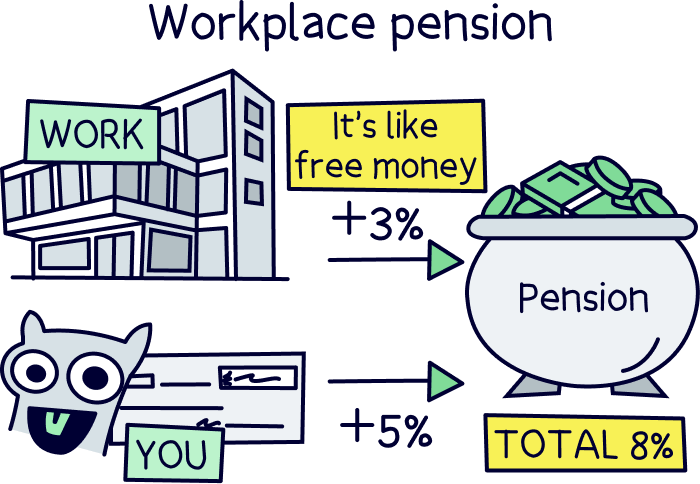
If you’re offered a workplace pension, you should definitely take it. After all, it’s a great way to unlock free money from your employer! But it’s sensible to start a personal pension – like a SIPP – as well. That way, you can boost your savings and end up with even more money to live off once you’re retired (cruises around the Caribbean anyone?!).
If you have spare cash to invest in a pension, opening a personal pension is generally a much better idea than increasing your workplace pension contributions. That’s because with a personal pension, you get to choose your own pension provider (in contrast to a workplace pension, where your employer will choose your pension provider for you). And of course, that means you can choose one with lovely low fees to save money (in fact, SIPPs tend to have even cheaper fees than other kinds of personal pensions, as you’ll be looking after your investments yourself instead of relying on your pension provider to do it for you!).
Nuts About Money tip: Not sure what SIPP provider to use? Here's the best and cheapest SIPP providers.
You might even find it useful to have a SIPP and another more ‘normal’ type of personal pension, where your pension provider looks after your money for you. Remember, with a SIPP, you’ll have to choose your investments yourself, so how quickly your savings grow will all depend on how skilled you are as an investor. On the flip side, your money is more certain to grow over time with a personal pension where your money is looked after by experts, as they have a lot of experience behind them! By having one of each, you may be able to get the best of both worlds.
Just be careful not to go overboard. Sure, two or even three pensions might be a good idea if they’re all different pension types – that way, you’ll be able to get different benefits from each of them. But anything more than that and really, you’re just increasing the risk of losing them.
If you have lots, consolidating your pensions (which is where you transfer all your old pensions to one new one) can be a great shout. That way, they’ll be easier to keep track of and you’ll know exactly where your savings are when you hit retirement age!
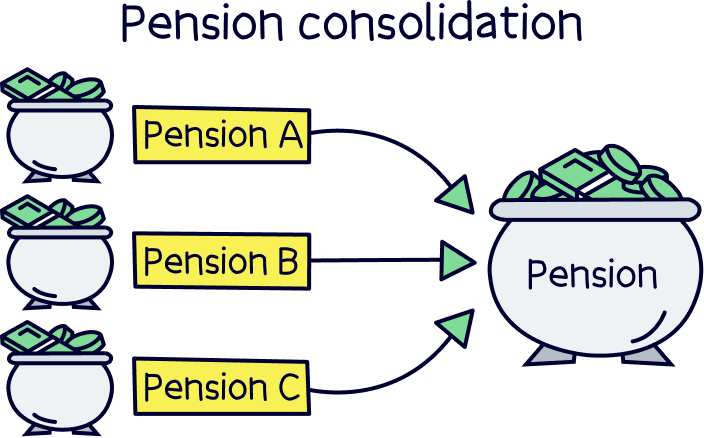
Self-invested personal pensions (SIPPs) work exactly the same as all private pensions. When you turn 55 (57 from 2028), you can begin taking your pension if you want to.
It’s only the State Pension where you have to wait until you are 66 (rising to 68 in the future) before you can start claiming your pension. That's providing you have enough National Insurance contributions on your National Insurance record (35 years to get the full State Pension).
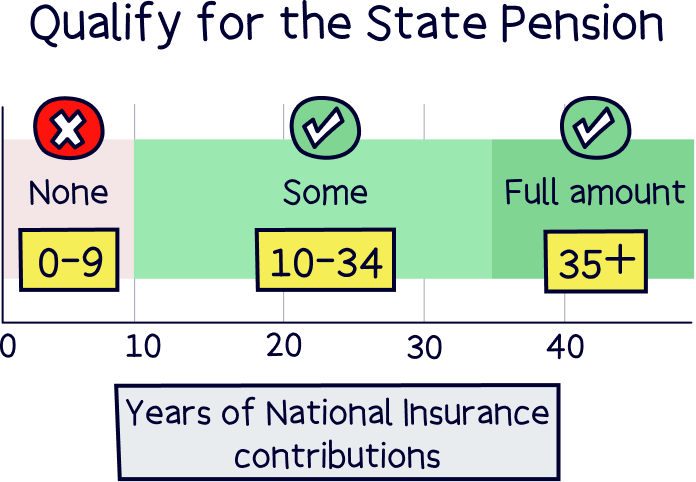
Nuts About Money tip: Check the age you'll get the State Pension with our State Pension age calculator.
With private pensions, you can take the first 25% completely tax free, and as a tax free lump sum if you like. Or, you can take it as regular income whenever and however you like, and the first 25% of each payment will be tax-free. The tax you’ll pay is Income Tax, and works exactly the same as your income when you’re working (e.g. your salary). So, you’ll have a Personal Allowance of £12,570 each tax year before you will pay Income Tax.
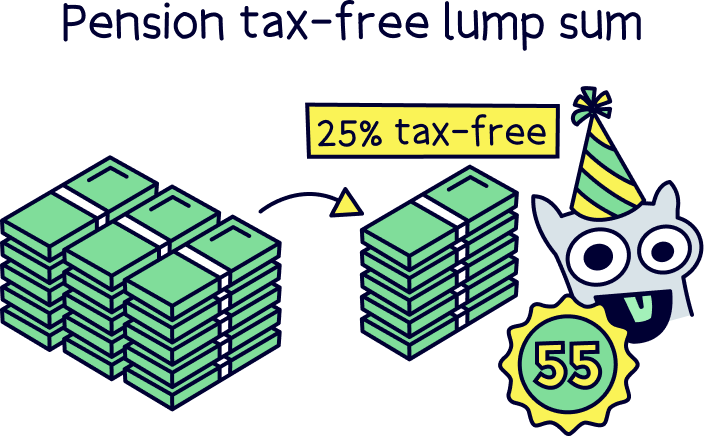
You could also buy an annuity with your pension, and this buys you a guaranteed income for the rest of your life (or a set number of years).
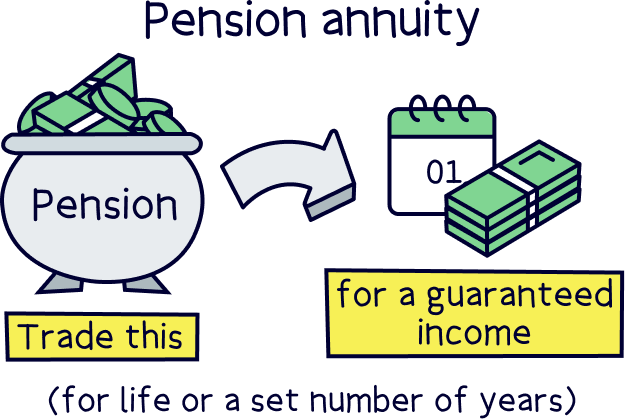
In summary, you can have as many SIPPs as you like. But before you go celebrating, just because you can have lots of SIPPs, that doesn’t necessarily mean it’s a good idea! Having lots of pensions lying around here, there and everywhere will just mean they’re easier to lose – and the last thing you want is for your hard-earned savings to go missing before you get a chance to use them!
Instead of having more than one SIPP, it could be useful to have a couple of different types of pensions. For instance, having a workplace pension alongside a SIPP will allow you to unlock free money from your employer while getting your SIPP fix at the same time. Or, having a standard personal pension alongside a SIPP could give you a bit more security as you’ll have a team of experts investing your money for you in case your own investing efforts don’t quite go to plan.
If you don’t yet have a personal pension, it can be a great way to boost your savings in retirement with the help of professionals. Check out our selection of the best private pension providers to get started. And here's our best and cheapest SIPP providers.
Whatever you choose, give yourself a pat on the back – the first step towards living the high life in retirement is to start saving. So, even if you’re just researching pensions for now, you’re on the right track. Your older self will thank you for it!
Want to learn more about pensions? Here’s all the information you need about pensions.
Find the best pension for you – you could be £1,000s better off.
Find the best pension for you – you could be £1,000s better off.
Find the best pension for you – you could be £1,000s better off.
We’d love to hear from you, and it will help others too.
Find the best pension for you – you could be £1,000s better off.